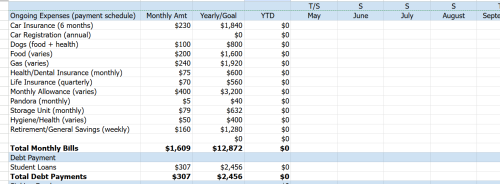by Semify
In today’s fast-paced automotive landscape, making smart upgrades to your vehicle is not only about boosting aesthetics and performance—it’s about safeguarding your investment over the long term. Car owners are increasingly seeking improvements that reduce overall maintenance expenses and enhance safety. By carefully selecting upgrades that deliver enduring benefits, drivers can enjoy both peace of mind and substantial savings over the life of their vehicle.
Enhanced Safety Features
Investing in state-of-the-art safety technology is one of the best ways to protect your vehicle and its passengers. Modern systems such as adaptive cruise control, lane departure warnings, and collision avoidance technology can help reduce the risk of accidents significantly. In fact, paint color may also influence accident rates; for instance, research shows that white vehicles have a notable safety advantage. According to Reader’s Digest, cars painted white are 12% less likely to be involved in an accident compared to those finished in black, regardless of the time of day. This statistic underscores the importance of considering even the subtler aspects of your car’s design when planning long-term upgrades.
Proactive Maintenance Investments
Regular upkeep can make a world of difference in the lifespan of a vehicle. Many car owners find that routine maintenance, such as oil changes and brake inspections, not only prevents major breakdowns but also helps keep repair costs manageable. Studies indicate that the average driver spends around $356 annually on car repairs. According to recent findings, these repair expenses can add up significantly over time. By investing in upgrades like improved brake systems or enhanced suspension, you may reduce the frequency of these repairs, ultimately saving money and avoiding unexpected downtime.
Upgrades for Trucks and Heavy-Duty Vehicles
For those who rely on trucks for business or personal use, durability is key. Upgrading components like suspension systems, engine parts, and even protective coatings can extend the life of your truck and maintain its performance under heavy loads. The truck repair industry is showing a promising trend; according to Dieselmatic, this sector is expected to grow at an annual rate of 3% through 2023. This steady expansion not only reflects the increasing demand for durable, long-lasting vehicles but also highlights the value of proactive enhancements that minimize the need for frequent repairs. Such investments ensure that your truck remains reliable and efficient, even as industry standards evolve.
Fuel Efficiency and Environmental Benefits
In the era of rising fuel costs and environmental concerns, improving your vehicle’s fuel efficiency has become a priority for many drivers. Upgrades such as engine tuning, aerodynamic modifications, and even low-resistance tires can contribute to a smoother, more fuel-efficient drive. These enhancements not only cut down on your monthly fuel expenses but also reduce your overall carbon footprint. A well-maintained and efficiently upgraded vehicle represents a commitment to sustainability—an increasingly important factor in today’s eco-conscious market.
Comfort and Technology Enhancements
Comfort and convenience are essential when considering long-term vehicle value. Upgrading your car’s interior can transform a daily commute into a pleasurable experience. Modern infotainment systems, ergonomic seating, and advanced climate control technologies are just a few examples of upgrades that make a tangible difference. Investing in these features can increase the resale value of your car, ensuring that it remains competitive in the ever-changing automotive market. Such technological enhancements not only add to your comfort but also keep your vehicle in step with the latest industry trends.
Long-Term Cost Savings
One of the most compelling reasons to invest in auto upgrades is the potential for long-term cost savings. While the initial investment in high-quality components or advanced technology might seem steep, these improvements often pay dividends by reducing the frequency of repairs and extending the overall lifespan of the vehicle. A well-maintained vehicle with thoughtful upgrades can see fewer unexpected breakdowns and lower overall maintenance expenses. With average repair costs accumulating each year, every dollar saved on maintenance can be reinvested into further improvements, creating a virtuous cycle of value enhancement.
Future-Proofing Your Investment
As technology and automotive trends evolve, staying ahead of the curve becomes increasingly important. Upgrades that incorporate modern safety features, enhanced efficiency, and improved performance not only deliver immediate benefits but also ensure that your vehicle remains competitive and reliable for years to come. Whether it’s adopting advanced safety technologies or choosing a vehicle color that can reduce accident risks, every thoughtful enhancement contributes to the long-term value of your investment.
Making well-planned auto upgrades is a strategic approach to vehicle ownership. Each upgrade—from improved safety features and proactive maintenance measures to fuel efficiency enhancements—plays a crucial role in reducing costs and increasing reliability. As you plan your next upgrade, remember that these investments are not merely about immediate improvements; they are about ensuring long-term value, safety, and satisfaction on the road.




